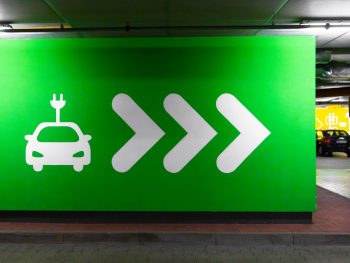Charging concerns deterring non-EV drivers, Paythru research reveals
Concerns over poor charging experiences including a lack of charge points are putting non-EV drivers off from making the switch.

Drivers’ biggest concern was not being able to easily find an electric vehicle charging point when needed
A new report from mobility payments technology business Paythru saw 2,042 British residents surveyed, of which 1,975 were not currently EV drivers.
The biggest concern among non-EV drivers was not being able to easily find an electric vehicle charging point when needed. Over half, 54% said this would put them off getting an EV and a further 26% said it might – a total of 80% highlighting it as a concern.
Over half said having to download different apps to access electric vehicle charging points was a disincentive that would (31%) or might (23%) put them off getting an EV.
A similar number said the challenge of understanding and comparing different payment tariffs for charging electric vehicles would (25%) or might (31%) put them off.
Equally, understanding the additional fees and rules associated with electric vehicles (e.g., parking tickets, charge overstays etc) was an annoyance that would (27%) or might (27%) put off potential buyers.
Finally, automated solutions are not for everyone. A high 38% said that not having someone available if there is a problem with the charging point or payment worried them, and put them off getting an EV, and another 31% said it might.
James O’Neill, Paythru’s CEO, said: “Taken together, this paints a picture of a population in which around 10-20% are not concerned about these challenges, and will probably get an EV when the time is right. For the rest, around a third see at least one aspect of user experience as a major disincentive to buying an EV, and another third are at least somewhat deterred by them.”
“To date, EV charging and payment infrastructure have been built around scale rather than user experience. Our research clearly demonstrates that once we move beyond early adopters, the UK public will need a much better user experience at the charge point before they are willing to take the plunge.”
Paythru’s report calls for a range of actions to improve the EV charging user experience including:
- Clearer tariffs: All chargers should charge by kilowatt hour (kWh) and all fees transparent
- Combine multi-party fees: Additional fees (such as parking or overstays) should be wrapped into a single transaction
- Interoperability between CPOs: Membership schemes should aim to allow users to access multiple other schemes, with fees shared and managed behind the scenes
- More payment options: Expand card readers to allow payments without going through an app. Legacy systems with no card reader, as well as the lack of cash payment options, could be solved by connecting EV chargers to parking payment infrastructure
O’Neill concluded: “Paythru does not have all the answers to these problems. What we offer is a cloud-based payment platform that handles the behind-the-scenes complexity of multi-party payments, so the user gets a single transaction. We are keen to work with CPOs, landowners and fleet managers to collaboratively improve the user experience of new and legacy infrastructure”.
To download Paythru’s Taming the EV Charging ‘Wild West’ white paper, please click here.












